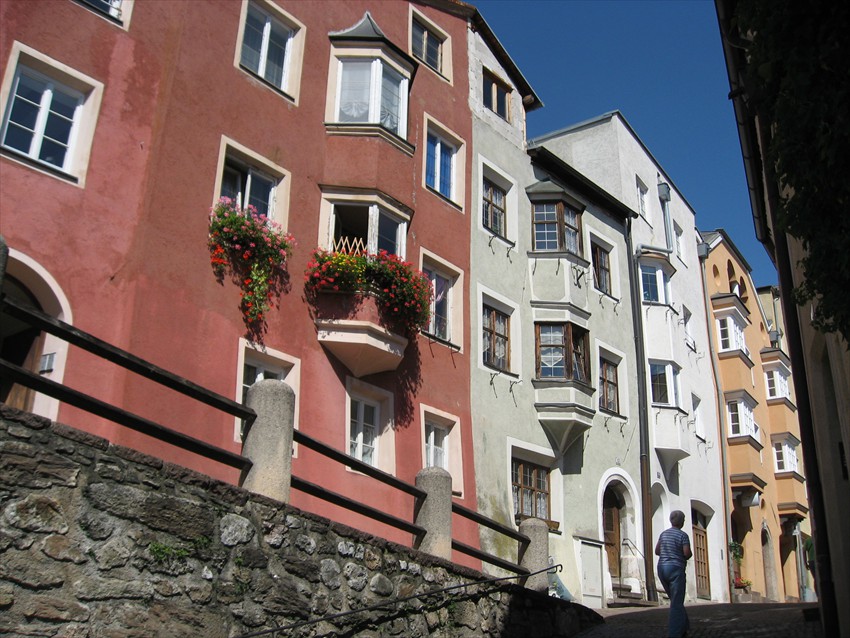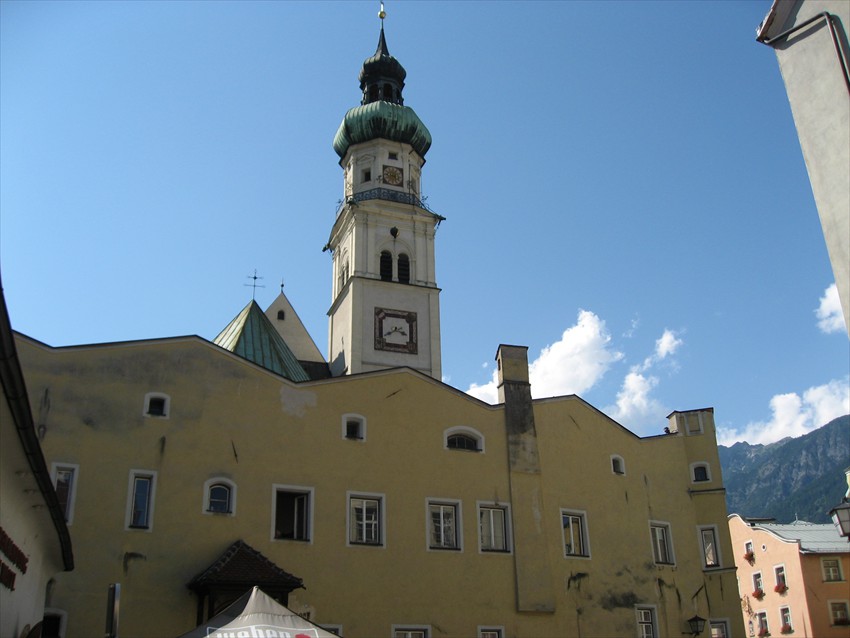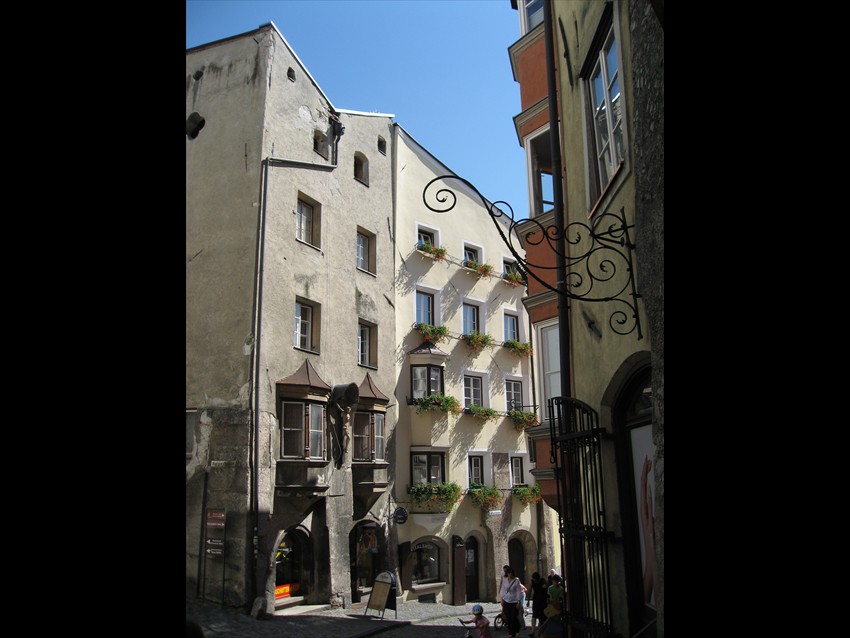From the Inn Valley cycle path, the entrance to the castle and the town leads in front of me.

Castle Hasegg (Münzerturm - Mint tower, Münze Hall)
Since the end of the 13th century, the castle served to protect the neighbouring brewing plant, shipping traffic, the river crossing over the Inn and to monitor the old Roman road. Hasegg Castle experienced its most significant upswing in 1567, when it was built under Archduke Ferdinand II. when it became a mint. The Haller Taler enjoyed world fame! In 1809 the last coins were minted in Hasegg.
The place name Hall first appeared in 1256. The name comes from the Middle High German "hal", as salt springs or salt works were called.
Since the 13th century, the salt works had been the town's main lifeblood.
In 1447 a fire destroyed most of the town. Subsequently, reconstruction triggered a decade-long phase of prosperity
In 1477 the princely mint was moved from Meran to Hall. It was closed in 1809.
In 1567 the ladies' convent was founded and subsequently the neighbouring Jesuit monastery. The Augustinian Convent near the Salvator Church had already existed before that. The Franciscan monastery still existing today dates from 1645.
In 1670 a violent earthquake, which lasted several weeks, destroyed a large part of the town. The following reconstruction led to the baroque style of the town houses, but especially of the sacral buildings.
In 1740 61 houses burned down in the "Fasserviertel". In 1795 there was another fire catastrophe, this time 42 buildings burnt down.
During a short walk around the city there are many things to discover.
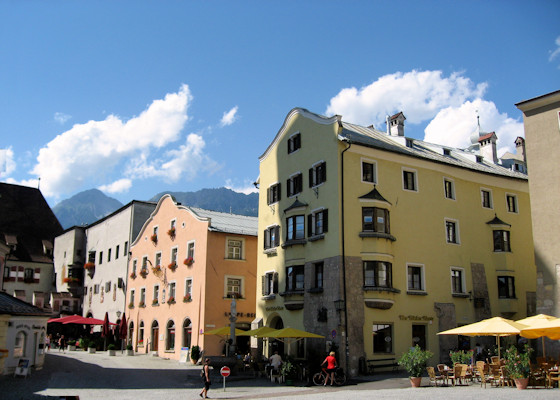
The houses on the upper town square
the pink rose house and on the right the yellow Sparkassenhaus
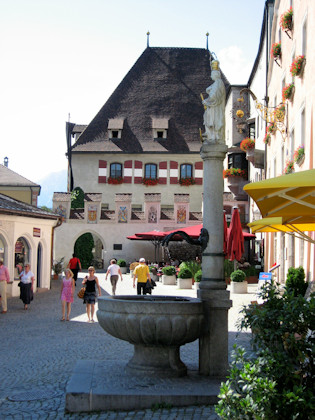
Oberer Stadtplatz - Upper town square
with town hall
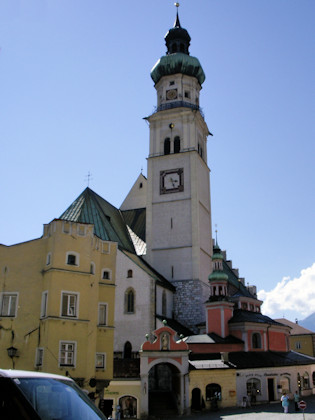
Parish church of St. Nicholas
In 1281 the foundation stone was laid for a chapel, which was quickly extended in the following period and became a late Gothic hall church in 1430. The Gothic tower built in 1345 was replaced by a Baroque tower after the great earthquake of 1670.

There is a lot of baroque decoration in the gothic church.
A copy of the Innsbrucker Mariahilfbild is on the right side altar.

Walking through the alleyways (Wallpachgasse) you sometimes get a view of the mighty Karwendel Mountains.
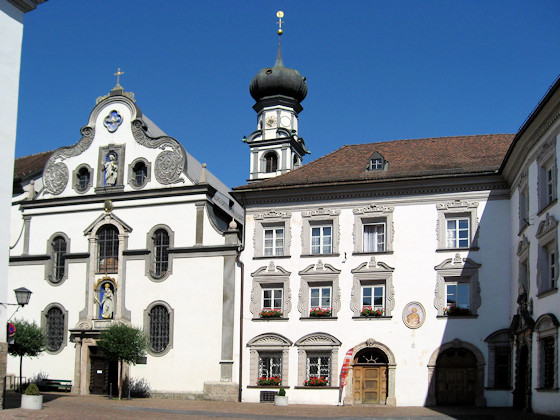
Jesuit Church
The Jesuit College in Hall was founded in 1571 by Archduchess Magdalena for the spiritual guidance of the Haller Damenstift. The monastery was completely renovated in 1671-84, and the church, consecrated in 1610, was also baroque in the later 17th century. In 1773 the monastery was dissolved. After its recent restoration, the former Jesuit monastery now has one of the most beautiful baroque courtyards in Tyrol.
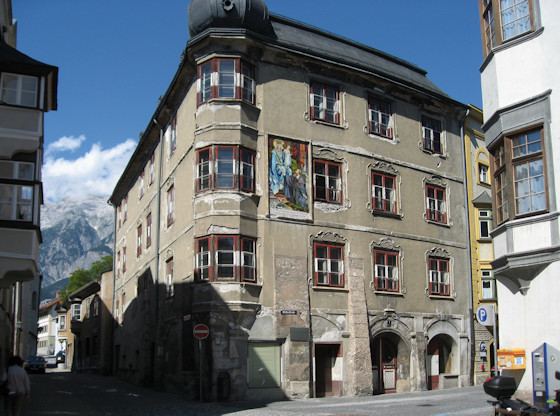
Guarinoni House
The mosaic on the façade of the house commemorates Dr. Hippolytus Guarinoni (1571-1654), the doctor of the Haller convent.
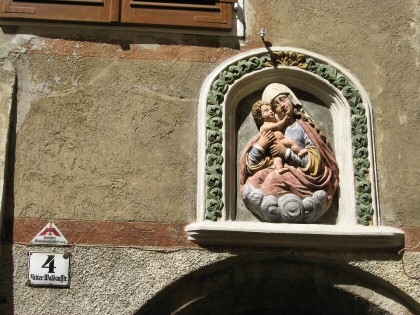
At a house in the Ritter Waldaufstrasse there is a plastic representation of Mariahilf.
